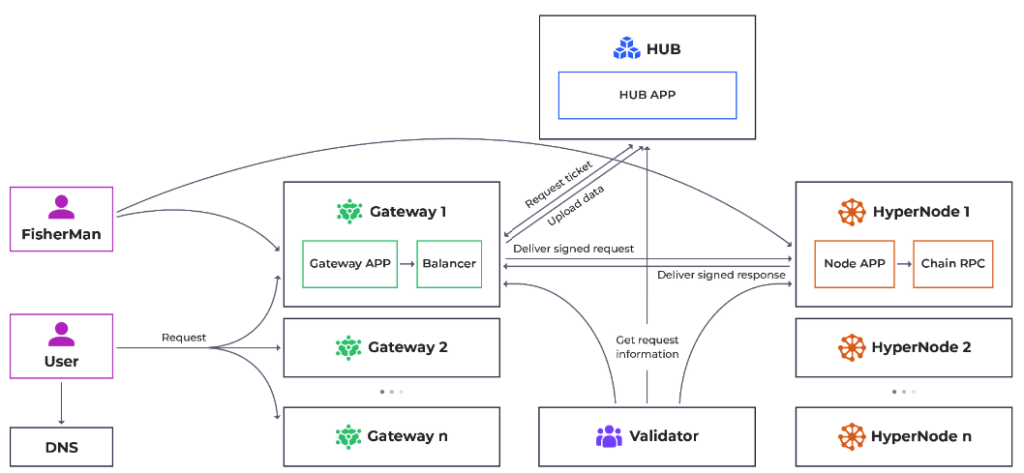BlockPI is a decentralised cross-chain collaborative service network for Web3.0 developers. They focus on building a decentralised acceleration network by providing enterprise RPCs and APIs that will support on-chain and off-chain third-party services, providing better network availability and service availability. Developers can simultaneously deploy their services on multiple chains and achieve cross-chain compatibility according to their needs.
Self-owned RPC nodes from wallets, exchanges, dApps, and third-party RPC providers will be encouraged to join the BlockPI Network by incentives. Every participant who connects the RPC server to the BlockPI Network will be benefited from it. They don’t need to keep renting servers to be prepared for the peak demand of RPC requests. In this way, they significantly increase the maximum RPC requests availability with a minus cost, only fees of extra inflow usage on-demand. On the other hand, any participant with idle capacity can earn by providing outflow RPC requests using its redundant resource.
Why build BlockPI
1. Distributed Network Structure
2. High performance accessibility for global users
3. Better privacy for dApps
4. Self-hosted Gateway, lower latency
BlockPI Network officially launched on October 25th, 2022. Users are able to enjoy the high-quality service on Ethereum Mainnet, Klaytn Mainnet Cypress, Klaytn Testnet Baobab and Polygon Mainnet.
BlockPI Structure

BlockPI Hub
BlockPI Hub is a server managing the user system, node rating and authenticator system, and accounting system. The user’s registration information, account information, and KYC information are maintained here. It also tests the nodes in the network all the time and gives them scores which is a source of BlockPI Load Balancer. The income and expenses of the entire network are calculated here, as well as the rewards issued to characters in the system. As you can see, this part is a centralized service. In later versions, we will gradually decentralize this part of the function, and deploy them to smart contracts, leaving only a small part of the core service.
HyperNode
HyperNode is the end node that processes RPC requests and sends responses to users through Gateway. HyperNode is usually run with the full node of the target blockchain (the RPC request targets). During the testnet phase #1, third-party operators were able to join and run HyperNodes.
Gateway
Gateways collect and sort users’ requests, and route them to the proper HyperNode by the BlockPI Load Balancer. Gateway registration is expected to be open to third parties operators after HyperNode.
Validator (coming soon)
Validators are individual blockchain nodes monitoring each role in the network. It is the guarantee of the healthy operation of the network. With certain frequency and random algorithm, a Validator retrieves data from HyperNode and Gateway and writes to a block. With the consensus protocol, the data is verified and recorded by other Validators. In this way, the Validators become a blockchain network and supervise the other roles in the network.
Fisherman (coming soon)
Fisherman is another role responsible for the network security and can be considered as a special kind of user. It verifies that HyperNodes and Gateways are functioning properly in the same way as normal users sending requests
